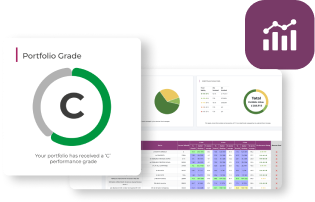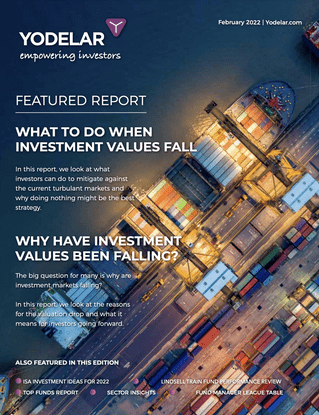-
Many investors hold multiple funds that appear diverse but share similar strategies and underlying holdings, resulting in hidden duplication.
-
Duplication often stems from selecting top-performing funds without considering their overlap with existing holdings.
-
Repeating exposure to the same companies across different funds leads to higher charges without added diversification.
-
Quality investment firms avoid duplication by assessing fund correlation, role in the portfolio, and overall cost efficiency.
-
Reviewing portfolios for overlap is essential to ensure each fund adds distinct value and supports long-term investment objectives.
For many investors, portfolio diversification is seen as a safeguard - an essential way to spread risk and improve long-term outcomes. But in practice, what looks diversified on the surface often conceals a costly inefficiency: asset duplication.
It’s common for portfolios to include several funds that appear distinct but follow similar strategies and invest heavily in the same underlying holdings. They may come from different providers, yet behave nearly identically. The result is a portfolio that’s less diverse than it seems, with investors paying multiple layers of fund charges to own the same stocks - compounding costs without improving risk-adjusted returns.
This issue is common among investors and advisers who place heavy emphasis on past performance. Historical returns are a key indicator of fund and manager quality, especially over longer timeframes, but they should be part of a broader assessment. Without considering a fund’s structure, holdings, and overlap with existing investments, portfolios can end up duplicating strategies - adding cost without adding value.
In this article, we explore the hidden cost of duplication, why it occurs, and how to identify and avoid it.
When Diversification Becomes Deception
At a glance, a portfolio with a dozen different funds may look impressively diverse. Yet closer inspection often reveals a different story. In some cases, portfolios contain three or more funds that all have top-heavy exposure to large-cap US tech firms or financials - despite sitting in separate sectors.
This is a subtle but widespread problem. Many funds within different Investment Association (IA) sectors rely on the same dominant market performers. For example, it’s not unusual to find Apple, Microsoft, or Nvidia featuring prominently across global, North American, technology, and even multi-asset fund holdings. The consequence? Investors inadvertently concentrate exposure in the same companies, while paying multiple sets of fund charges to do so.
The issue can be compounded by the natural appeal of strong past performance. A fund that has delivered exceptional results over one, three or five years is understandably attractive - but if it mirrors another fund already held in the portfolio, its inclusion may not add value. Instead, it simply increases the cost of holding the same companies multiple times.
This issue is especially prevalent among DIY investors and portfolios assembled by advisers relying on off-the-shelf recommendations. In both cases, there’s often an attempt to combine ‘top-performing’ funds without first assessing for style, strategy, or underlying stock duplication. The result isn’t just reduced diversification – it’s a direct hit to portfolio efficiency.
Unlike asset allocation drift, which develops gradually as markets shift, duplication typically arises from intentional but poorly informed decisions. It stems from a focus on past performance rather than assessing how new holdings align with existing ones. This distinction matters. Duplication is entirely avoidable – but only when investors recognise that different fund names don’t necessarily mean different exposures.
Related Article: Why Portfolio Drift Demands More Than an Annual Review
Spotting Duplication: What to Look For
Duplication in a portfolio isn’t about fund names - it’s about what those funds actually hold and how they’re managed. Two funds may appear distinct, but if both are heavily invested in the same companies, the benefit of diversification is significantly reduced.
A clear warning sign is repeated exposure to the same large, well-known stocks. Many of today’s top-performing funds share similar holdings, particularly in the US tech and global mega-cap space. When several of these funds are combined in a portfolio - often across different wrappers or recommendations - it can lead to hidden concentration risk.
Effective fund analysis tools can highlight these overlaps by identifying how often the same stocks appear across multiple holdings, how much they contribute to overall portfolio weight, and whether certain sectors or regions are overrepresented.
Cost is another important consideration. Holding several actively managed funds that follow similar strategies can lead to duplicated charges, with investors paying multiple layers of fees for access to what is essentially the same exposure.
In most cases, duplication isn’t intentional - it stems from a lack of transparency and limited cross-comparison of holdings. But its impact is measurable: higher costs, reduced diversification, and less resilience in changing markets.
A well-constructed portfolio should combine complementary strategies that bring genuine diversification - not multiple versions of the same exposure. Without careful oversight, investors can end up paying more for less.
When Top Performance Masks Duplication
The table and charts below highlight two funds from different sectors: the Royal London Global Equity Select fund (IA Global) and the BlackRock US Dynamic fund (IA North America). Both have delivered strong results over multiple timeframes and are among the most popular fund choices with UK Investors.

*Source: hub.yodelar.com. **Past performance is not an indicator of future returns
***Figures up to 30th June 2025

*Source: hub.yodelar.com
Strong past performance can reflect high-quality fund management - but it can also result from prevailing market trends that favour specific styles. In this case, both funds adopt a growth-oriented approach with a strong bias towards large-cap US equities. Despite being classified under different sectors, they share significant overlap in their top holdings, including companies like Microsoft, NVIDIA, Visa and Amazon.
Individually, each fund stands out as a strong performer. But when held together in the same portfolio, they provide limited diversification - concentrating exposure in a similar region and investment style. As a result, investors may end up paying two layers of active fund charges for what is effectively the same underlying exposure.
This example underscores why it’s critical to look beyond sector classifications and performance tables. Understanding how each fund aligns with others in a portfolio is essential to avoid duplication and ensure that every holding adds genuine value.
The tables below highlight the extent of overlap between these two high-performing fund - demonstrating that significant duplication can occur even between funds classified in different sectors.

*Source: Morningstar
The Hidden Cost of Paying Twice
The true cost of duplication isn’t always immediate. Investors won’t see an explicit penalty on their statement for overlapping fund holdings. Instead, the damage accumulates gradually - through higher fund charges, performance dilution, and missed opportunities for more efficient diversification.
When investors hold multiple funds with shared strategies or similar holdings, they are effectively paying several fund managers to run the same portion of the portfolio. Each fund carries its own ongoing charges - often in the range of 0.5% to 1.5% for actively managed strategies. These fees apply regardless of overlap, which means investors could be paying two or three times to access the same group of underlying companies.
A portfolio built around similar funds is also less responsive to changing markets. If a single style - like US growth - suffers a downturn, the portfolio is hit repeatedly. Rather than reducing risk, duplication can intensify it.
True diversification protects against this. But portfolios built on overlapping strategies tend to move in unison, making them less resilient during periods of volatility.
How Quality Advice Avoids Duplication
Avoiding duplication requires more than identifying overlapping stocks. It demands a structured approach to fund selection, portfolio design, and ongoing oversight.
High-quality portfolios are constructed by carefully evaluating the role each fund plays within the overall structure. This involves analysing fund strategy, risk factor exposure, asset class behaviour, and how each holding has historically interacted with others in the portfolio. Such analysis helps avoid style crowding and minimises duplication, ensuring that every fund contributes something distinct and purposeful to the portfolio’s risk and return profile.
Cost awareness is also a key part of this process. Where active funds are used, it’s because they offer genuine differentiation - through style, region, or strategy. If a fund offers no added value, it doesn’t make it into the portfolio.
Importantly, quality portfolio management is never static. It’s dynamic, with regular reviews to ensure holdings remain relevant, risks are balanced, and the overall strategy remains aligned with client goals.
Following Yodelar’s merger with MKC Wealth, UK investors now have access to this level of disciplined, discretionary management. Combining Yodelar’s fund analysis expertise with MKC’s regulated investment infrastructure allows for faster decisions, better oversight, and more efficient portfolios.
Ultimately, portfolios built through robust advice and evidence-based fund selection are not only more efficient - they are more likely to deliver better outcomes.
Bringing It Together: Reviewing for Efficiency
Duplication is one of the most common and under-acknowledged inefficiencies in portfolio management. It often stems from good intentions - selecting strong-performing funds - but ends up weakening the portfolio over time.
Past performance remains an important tool for identifying high-quality funds, but it should never be viewed in isolation. Efficient portfolio construction requires deeper analysis - ensuring each holding plays a distinct, complementary role and that costs are kept in check.
For investors unsure how well their portfolio stacks up, the key questions to ask are:
- Are multiple funds holding the same companies?
- Is my portfolio more concentrated than it appears?
- Am I paying more in fund charges than necessary?
- Does each holding add something unique?
Yodelar offers a free portfolio analysis to help investors assess the quality and structure of their investments. The review identifies fund performance, highlights potential inefficiencies such as duplication or excessive charges, and supports more effective portfolio construction. Click the link below to request your analysis.


















